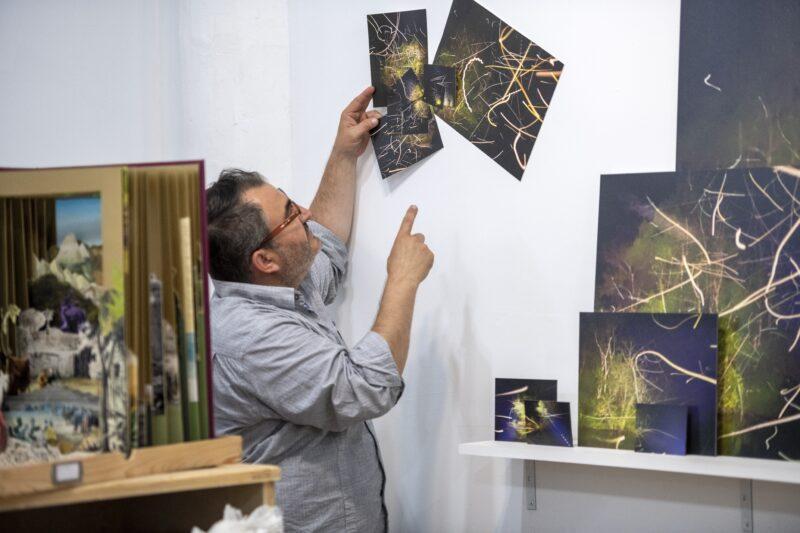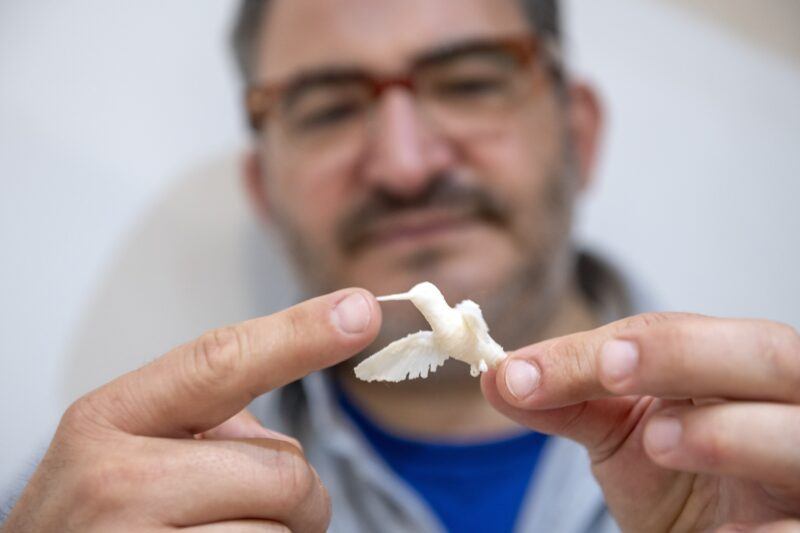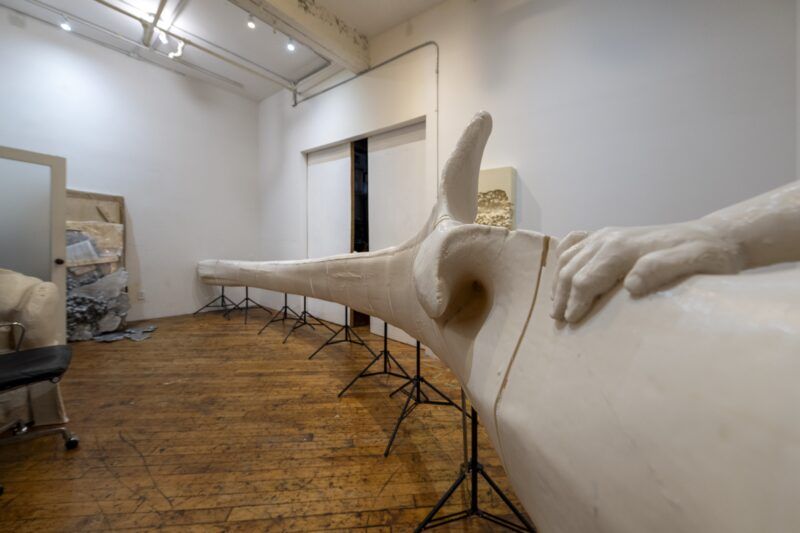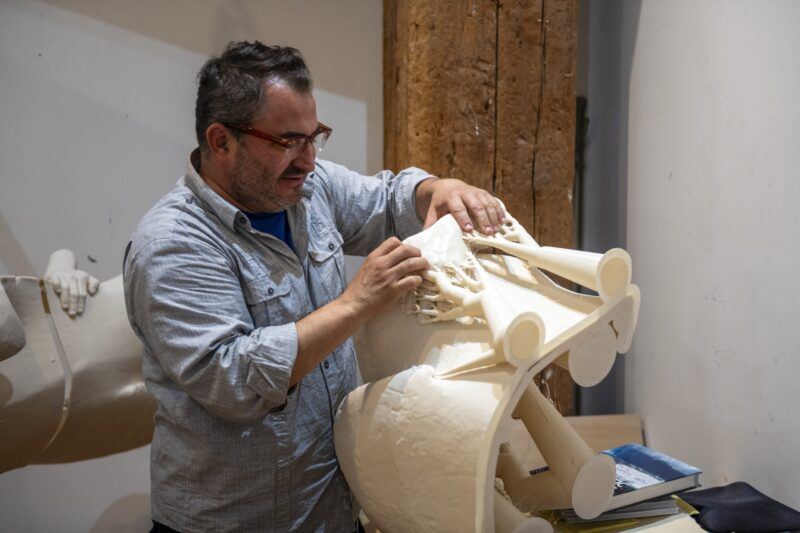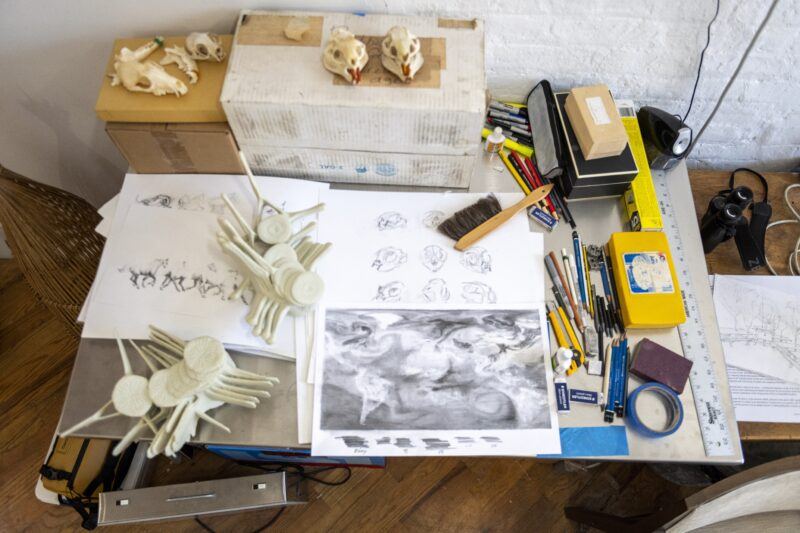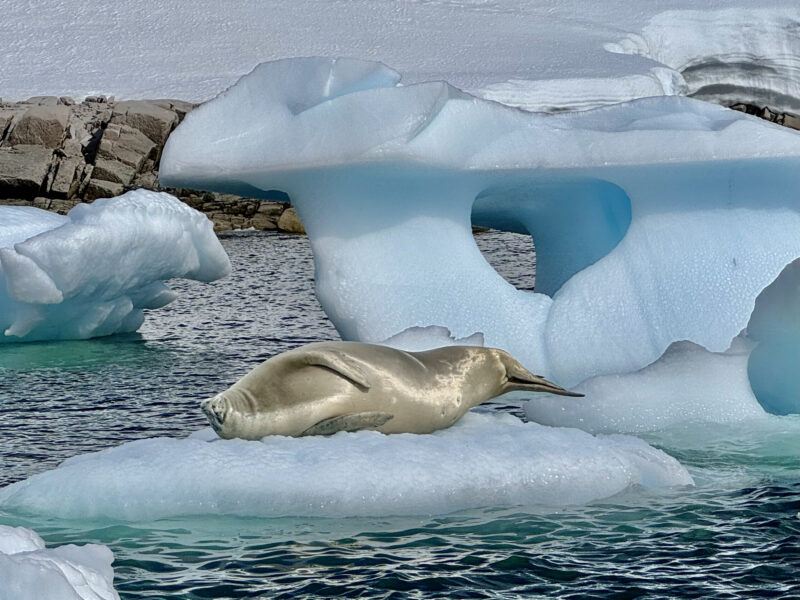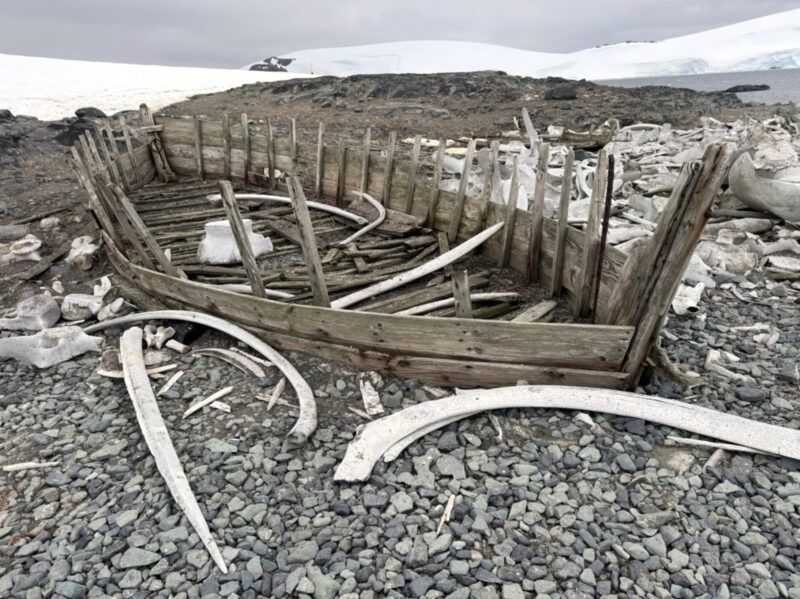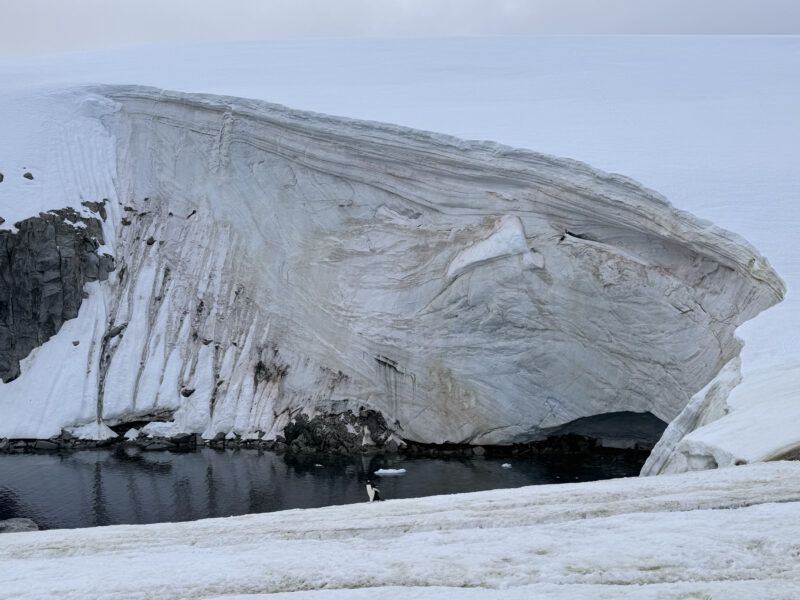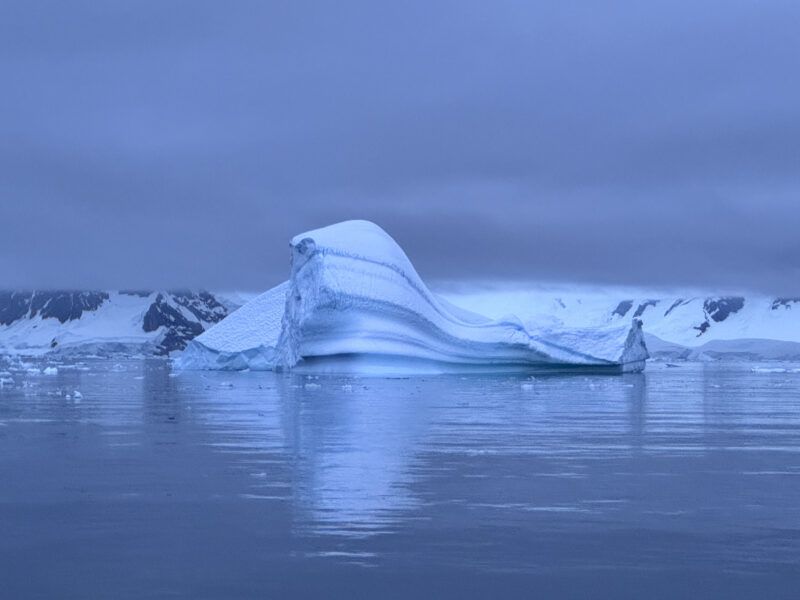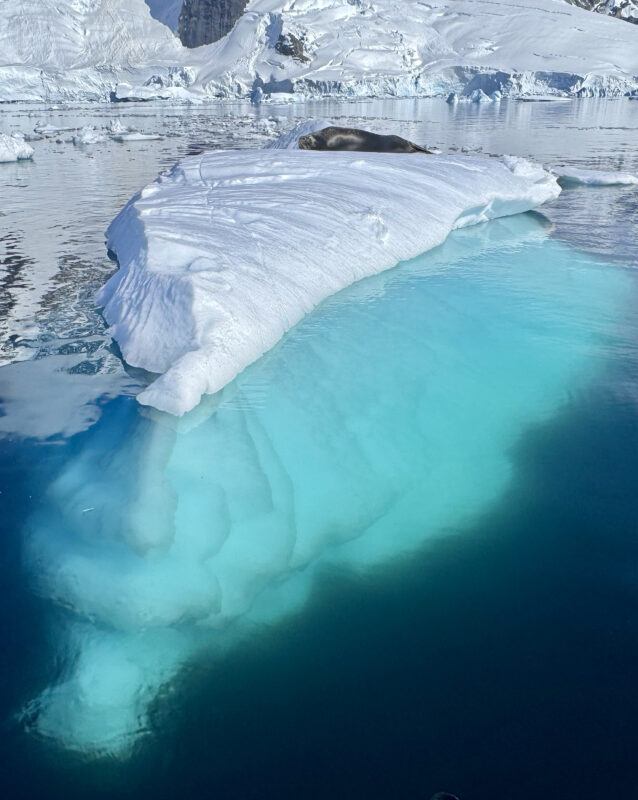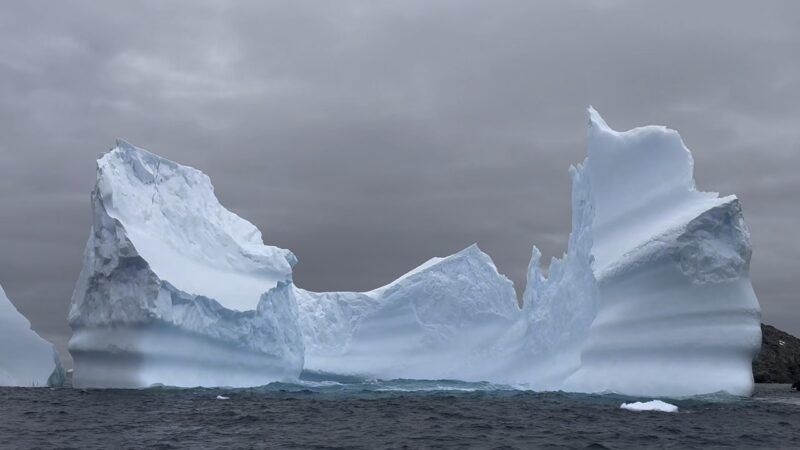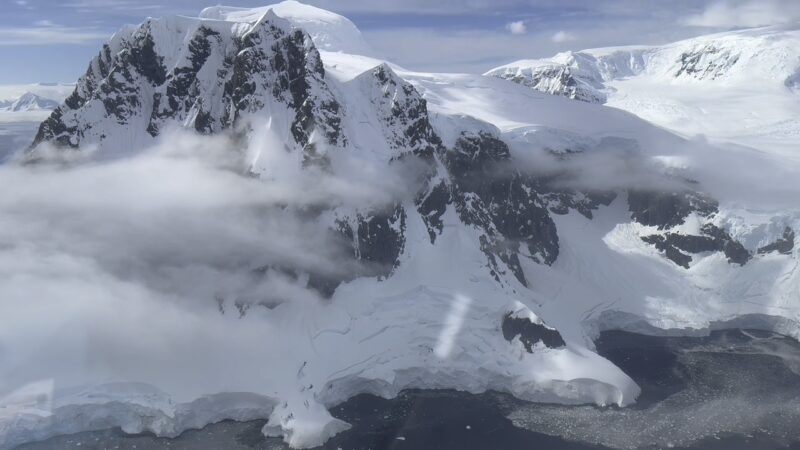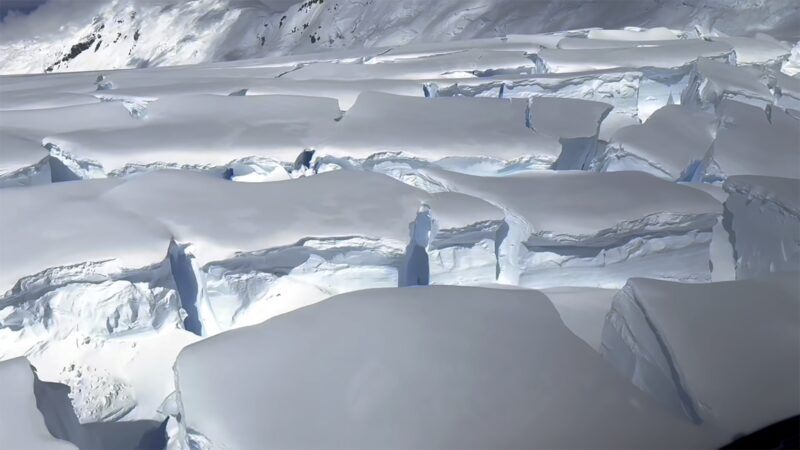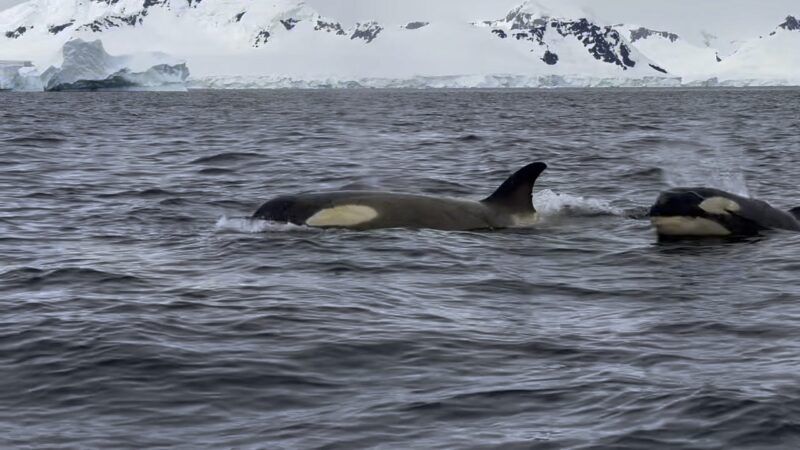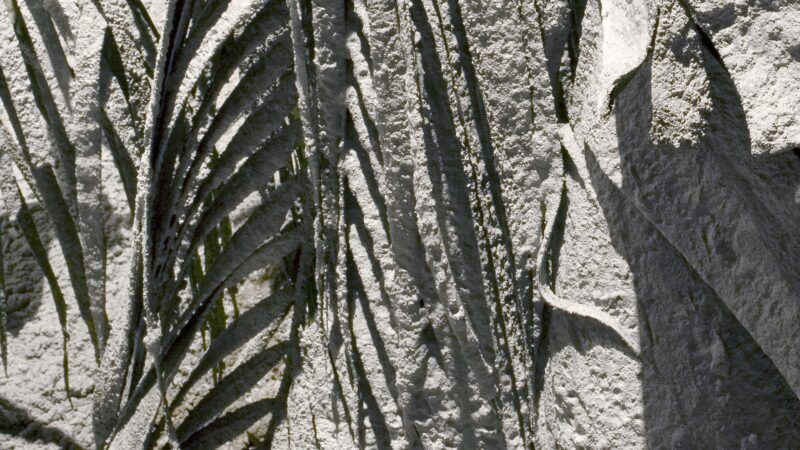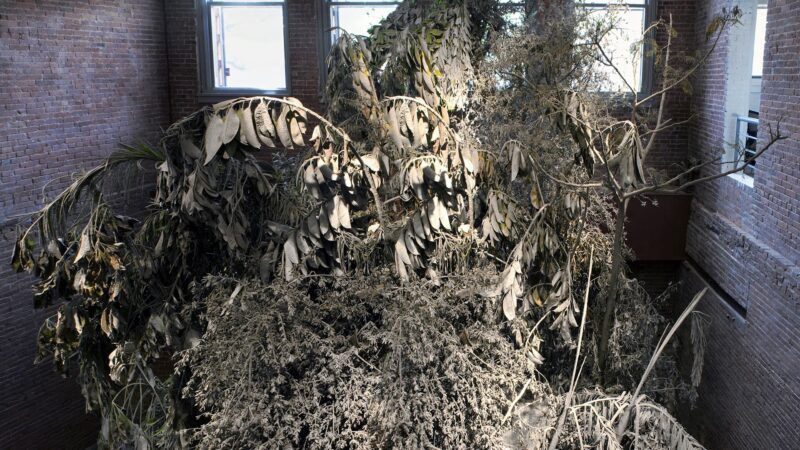There are a lot of unknowns when traveling in Antarctica. I didn’t really know what to anticipate or what to bring, so I armed myself with everything from audiovisual equipment to a mobile drawing studio.
The physical environment itself limits what you can do. The weather can change in a few minutes, so you are constantly thinking: What are the wind conditions like? What is the icefield doing? All of these elements dictate your every move. I ended up taking a lot of audio recordings because the audible texture of the environment is so poignant. The auditory experience of being in and around Antarctica was less about “picturing” the place than needing to be physically closer to what was unfolding in front of me. Audio was an unfamiliar medium for me to work with: it was more intuitive, unmediated, and in the moment.
Most of what I recorded were the different permutations of ice. I have recently assembled this into something like a lexicon of ice. This includes anything from a glacial tongue to black ice and fast ice. Some of the terms within this lexicon stood out to me as quite sculptural: sludge ice, ice wedge, hair ice, grease ice, growler, ice-smoothed rock, ice flowers. This has offered a way of thinking about this landscape, not through a conventional process of creating a picture of it, but through an observation and understanding of how the elements that make up this landscape are continuously moving and behaving. All of this is quite fantastical and all of it is visible, clearly playing out in front of you.
Antarctica is one of the most mediated places on Earth, and yet some of the most sophisticated technologies we have for image capture fail to depict its reality. Legibility is how one can see around pervasive cultural filters and in Antarctica, you’re faced with a situation where everything looks like the hallmark card, the advertisement, the poster—cultural images that we are routinely inundated with. These are images composed to tell a very specific kind of story: one that promotes the National Geographic version, where everything is majestic and either catastrophic or picture-perfect and wrapped up in a neatly packaged understanding.
In Antarctica, you are hyper aware of the fact that you’re creating a “landscape” the moment you’re taking a picture—you’re packaging and framing it. That has nothing to do with what is in front of you. This process is a regurgitation of how we are conditioned to see this place, putting it into an already familiar form, that of an expected photograph. For me, photography became a hyperconscious act: my awareness of taking a photograph of 700,000 years of ice, and suddenly parts of it are calving into the sea, like, “Whoop, there went a 200,000-year-old chunk of ice!” The various elements of ice are such active components of the landscape that it shifted my sense of how a landscape can be ascertained in a sensorial manner rather than a pictorial manner.
Because the Antarctic landscape is such a haptic situation with the way the ice is constantly calving, forming, and behaving, time becomes legible in different ways than other environments I’m accustomed to. What typically might be comprehended abstractly, such as deep time, is very active, observable, and palpably understood in Antarctica. The infinite number of permutations that ice has is one example: everything from brash ice (the recently crushed ice) to pancake ice (ice that forms from constant agitation in the night as temperatures drop) to the floating black ice (which is rendered nearly invisible in its transparency through every bit of oxygen being pressed out of it over centuries of glacial weight). In this environment, deep time is dynamic and comprehensible, as it leaves its traces on everything and takes on new forms continuously, sort of like a moody person.
Antarctica brought me to understand ecosystems in a new way. It’s very different from a place such as the Amazon basin where I’ve spent a lot of time doing fieldwork and working on conservation projects. The Amazon is extremely biodiverse partly because it’s never gone through major extinction events like other parts of the world; in many ways, the Amazon has remained an ancient system. It’s not that there are new species being born regularly there, but more so that older species haven’t gone extinct. This means the interconnectedness of life gets more complicated over millions of years as species accumulate and intertwine, which is not as legible to us, requiring myriad tools to unpack and understand it. In Antarctica, however, an ecosystem is often simplified and comprised of just a few things, like diatoms, krill that eat the diatoms, penguins that eat the krill, seals that eat the penguins, and Orcas that eat the penguins and seals. There’s something about this reduction that puts ecological relations into high relief: you don’t have to necessarily imagine what it was like to live 700,000 years ago because the ancient ice envelops the entire environment—void of cultural benchmarks—and the ecosystem that evolved from it is legibly playing out in front of you with the directness of a bumper sticker.
In the expeditions I’ve joined in different parts of the Amazon basin, I’ve often worked alongside conservation biologists. We work to avoid the trappings of what it is to be a Westerner in these places, extracting things, whether it be images, materials, or ideas. The history and genealogy of the scientific discipline has contributed directly and indirectly to the extractionist industries that exploit places like the Amazon. But at this very moment, we also need the scientific discipline, we need anthropologists, and we need biologists working on conservation issues. In tandem with Indigenous peoples and their own activism and assertions of their natural rights, these conservation biologists are often the first line of defense against exploitative industries. In Antarctica, since humans have never been able to survive there until recently, it lacks the same cultural weight as all the other continents that have endured the brunt of colonialism and war. It means something different in Antarctica to ask the question, “What am I extracting from it, or what am I adding to it?” It’s full of interesting paradoxes, which are a poignant reflection of our own limited perceptual capacities in this moment.
In some of the past projects I’ve done, I decided that instead of employing an existing sculptural language to tell a story of our environmental crisis, I’ve been looking to employ a “relationship” to the natural world that considers our newfound situation with nature and our impact on it. This process is about letting the situations dictate a new material set of relationships: not trying to describe this idiosyncratic relationship, but allowing the relationship to dictate a unique combination of materials and artistic forms. Just as we have entered a new era of rapid ecological demise and climatic chaos, so too are the tools and criteria that govern how we engage art changed by it.
In a project of mine from some years back, Preserved Forest (2010–2011), I covered a forest section inside MoMA PS1 with twenty tons of concrete. Such an artwork is not coming from a genre of concrete-covered forests in art history nor is it a conventional sculptural material approach, like working in bronze or clay. There’s not a genre in that way of working, it’s a new way of working, just as we have a new way of working with the natural world. The subject matter dictated the form, rather than the other way around. Just as with Desert Rooftops (2011–2012), the rooftops I built in Times Square that mimicked sand dunes, or more recently having worked closely with conservation biologists, I’ve been using the naming of species as a sculptural medium. This was a rebuttal to the Linnaean tradition of classification, which has been fueled by colonialism and the exploits of the New World and other parts of the globe.
I’m not disparaging science—quite the opposite. However, some aspects of the scientific discipline come out of histories of domination and exploitation. Currently, we’re in a different situation with the natural world where we desperately need science to taxonomically describe and conserve a species to prevent them from going into dark extinction (or anonymous extinction: when an undiscovered species goes extinct before scientists knew of its existence, let alone have had a chance to protect it). This was the core purpose of the project I did recently at Crystal Bridges’ Momentary, called Lonely Loricariidae (2023-2024), which used the exhibition format to highlight this newfound relationship and to describe certain fish species as new to science—which is ultimately an act of conservation folded into a sculptural work.
Sometimes, there is a productive kind of conflict within the artist-scientist relationship, since we are often two sides of the same coin. In my experience of working with Dr. Nathan Lujan, whom I’ve known and worked with for almost 20 years, I’ve seen how elements of Nathan’s scientific projects have shifted to include understandings of a broader cultural impact in ways that they didn’t before. My work with Dr. Lujan has allowed me to ask: how can artists think through and influence scientific forms of study and inform how people receive knowledge tangibly and culturally, rather than simply perform as data visualizers of scientific discoveries. This understanding of the contradictions embedded in these disciplines of science are things we need to be able to live with and discuss, I think artistic practices can hold those contradictory elements next to each other. We have to change our relationship to what urgency means and looks like and part of this grappling with a newfound urgency is how to mourn the loss around us. There are many more species and environments that we’re not even aware of that have already moved into extinction. In this, mourning becomes an important step, as does maintaining a sense of agency, accountability, and responsibility for it. It is the irrational and contradictory state of our being. Scientists can reveal the physiological truth of our being, but can’t necessarily come to terms with the irrational or contradictory elements of our being. This is what an artistic practice excels at.
Robert Smithson was such an important person for me as a young artist and probably for a lot of artists of my generation who are thinking about the natural world and how ecology is defined and how art even begins to engage it. Smithson was an interesting character because he worked a lot with rocks, which are hard to relate to. However, in order to begin reading into what Smithson was really doing we have to consider the rock! Some people can look at that rock and think, “Ah, 571-million years of geologic history right there! I see it!” To get to such a declaration you begin to think in a place that is both visceral and abstract, and it requires your imagination to get to that point: experiencing the thing in front of you in deep time. It’s not unlike understanding what an ecosystem is, an ecosystem isn’t something you can observe externally from the forest edge: it takes experience of the place plus knowledge of its ecological functions to ascertain the ecosystem right in front of you assembled through imaginative observation. Smithson was able to take this relationship to a rock while thinking through the mode of science fiction as a means to employ one’s imagination in the moment of. In this, he constructed a bridge between those spaces: a remote past or distant future felt in the present moment.

